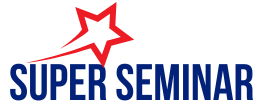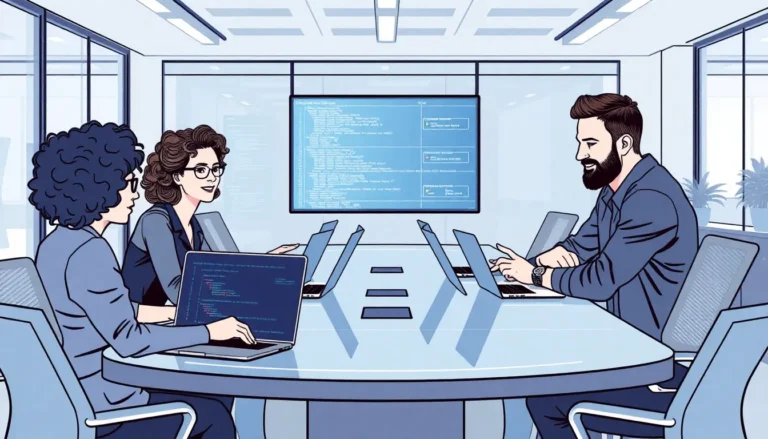In a world where everyone seems to have a side hustle, SaaS product development stands out as the crown jewel of entrepreneurial ventures. It’s like creating a magical app that solves problems while you kick back in your pajamas. Who wouldn’t want to turn their brilliant idea into a software solution that could be the next big thing?
Table of Contents
ToggleOverview of SaaS Product Development
SaaS product development involves creating applications accessed via the internet rather than installed on local devices. Developers leverage cloud infrastructure to deliver scalable and efficient software solutions. Teams focus on user needs and industry trends to ensure their products solve specific problems effectively.
A typical SaaS development process includes several key stages. Initial research identifies target users and their pain points. Following that, product design merges functionality with user experience to create intuitive interfaces. Development proceeds with agile methodologies, allowing for adaptability to changing requirements.
Testing is crucial in SaaS product development. Continuous integration and testing ensure that software performs reliably across various environments. Quality assurance processes detect bugs or issues before deployment, maintaining a high standard.
Launch marks a significant milestone in the SaaS life cycle. Post-launch strategies involve marketing tactics and user engagement efforts to attract subscribers. Analytics tools track user behavior, feeding back into further development cycles to refine features and improve user satisfaction.
Finally, ongoing updates keep SaaS products competitive. Regular feature enhancements and security updates sustain user interest and loyalty. Effective customer support contributes significantly to the overall user experience, addressing concerns and fostering community engagement.
Understanding these components facilitates successful SaaS product development and positions startups well in the marketplace. Emphasis on iteration and user feedback drives innovation and growth, appealing to both entrepreneurs and customers.
Key Components of SaaS Product Development
Understanding the key components of SaaS product development is crucial for creating effective software solutions. These components include product strategy, technical architecture, and user experience design.
Product Strategy
Creating a product strategy requires a clear vision for the SaaS offering. Market analysis identifies user needs and competitive landscapes, ensuring relevance. Defining target demographics facilitates tailored features that resonate with potential users. Pricing models should align with market expectations while maximizing profitability. Additionally, setting measurable goals for user acquisition and retention drives overall direction.
Technical Architecture
Technical architecture serves as the backbone of the SaaS application. Scalability is essential, allowing the product to grow alongside user demand. Cloud infrastructure often provides the necessary flexibility and resilience. Data security and compliance with regulations protect user information and build trust. Integration capabilities, such as APIs, enable seamless connectivity with other software solutions, enhancing functionality.
User Experience Design
User experience design focuses on creating intuitive interfaces and enjoyable interactions. Conducting user research provides insights into how users engage with the product. Prototyping and iterative testing refine functionality and design elements based on feedback. Accessibility should be a priority, ensuring all users can easily navigate and utilize the software. Ultimately, a positive user experience fosters satisfaction and encourages retention.
Best Practices in SaaS Product Development
Effective SaaS product development requires adherence to best practices that enhance efficiency and user satisfaction. Focus on agile methodologies and continuous integration to streamline the process.
Agile Development Methodology
Agile development facilitates adaptability in software projects. Teams prioritize iterative cycles that allow for regular feedback and adjustments. Users benefit from features that evolve based on real-time input, ensuring the product aligns with their expectations. Short sprints promote collaboration, encouraging cross-functional teams to work towards common goals. Frequent testing during each cycle can identify issues quickly, leading to more reliable releases. By embracing agile methodologies, companies foster a responsive development environment.
Continuous Integration and Deployment
Continuous integration and deployment (CI/CD) practices enhance software quality and reduce deployment time. Automated testing checks code changes promptly, minimizing disruptions. Deployments occur more frequently, which helps companies respond quickly to user feedback. Regular updates keep the application relevant and secure. Emphasizing CI/CD allows development teams to maintain a consistent workflow and ensure a reliable product. Users enjoy a smoother experience with fewer bugs and enhanced features delivered regularly. These practices drive ongoing improvement and satisfaction.
Challenges in SaaS Product Development
SaaS product development faces several challenges that can impact quality and user satisfaction. Two prominent issues include security concerns and scalability issues.
Security Concerns
Data breaches pose significant risks in SaaS environments. Protecting sensitive information requires robust encryption protocols and compliance with regulations like GDPR. User authentication methods must be strong and reliable to prevent unauthorized access. Regular security audits help identify and mitigate vulnerabilities. As cyber threats evolve, maintaining an agile security strategy becomes crucial for safeguarding user trust and business reputation.
Scalability Issues
Scalability impacts performance as user demand fluctuates. Efficient systems must accommodate growth without compromising speed or reliability. Load balancing techniques distribute traffic across servers, enhancing responsiveness. Microservices architecture supports scalability by breaking down applications into manageable components. Developers must plan for resource allocation and cost implications when accommodating more users. Accurate forecasting helps teams prepare for potential spikes in usage effectively.
Conclusion
SaaS product development presents a unique opportunity for entrepreneurs looking to innovate in a digital-first world. By understanding the critical components such as product strategy and user experience design, developers can create solutions that resonate with users. Embracing agile methodologies and continuous integration ensures that products remain relevant and high-quality.
Navigating challenges like security and scalability is essential for building trust and maintaining user satisfaction. With the right approach and focus on best practices, developers can not only launch successful SaaS products but also foster long-term growth and engagement. The landscape is ripe for those ready to transform ideas into impactful software solutions.




